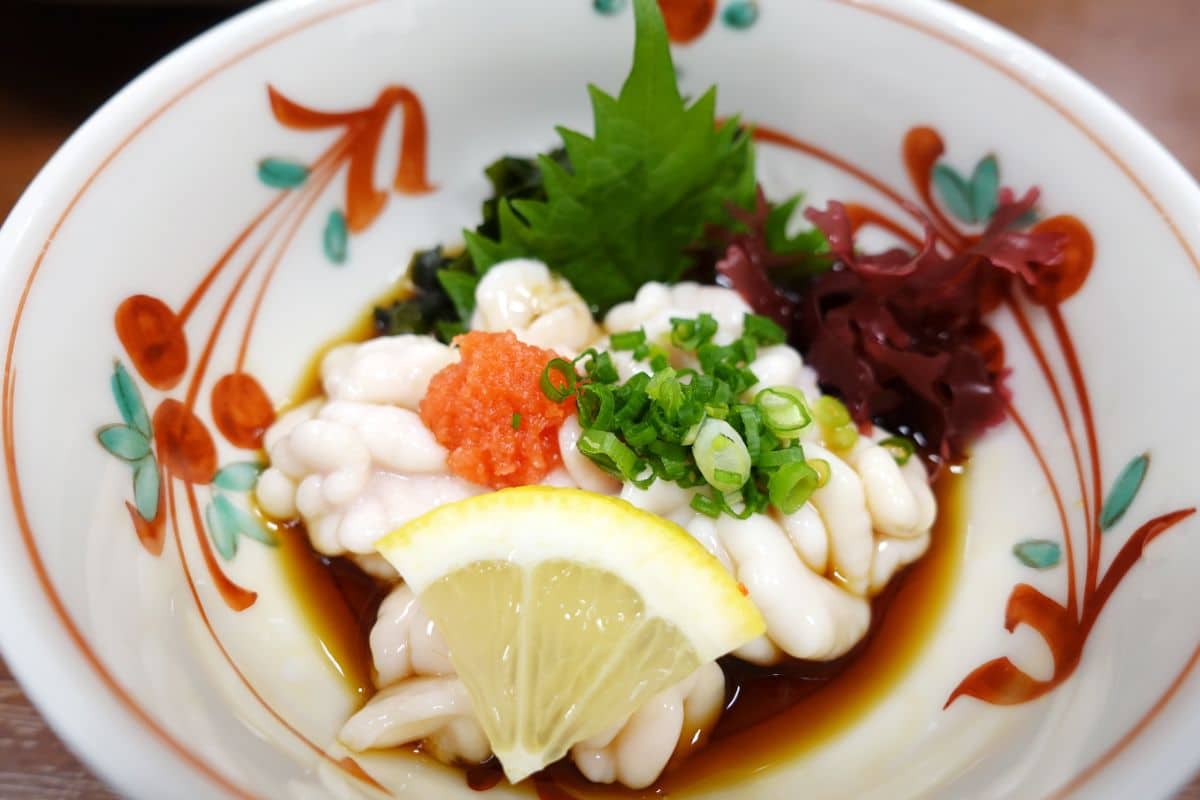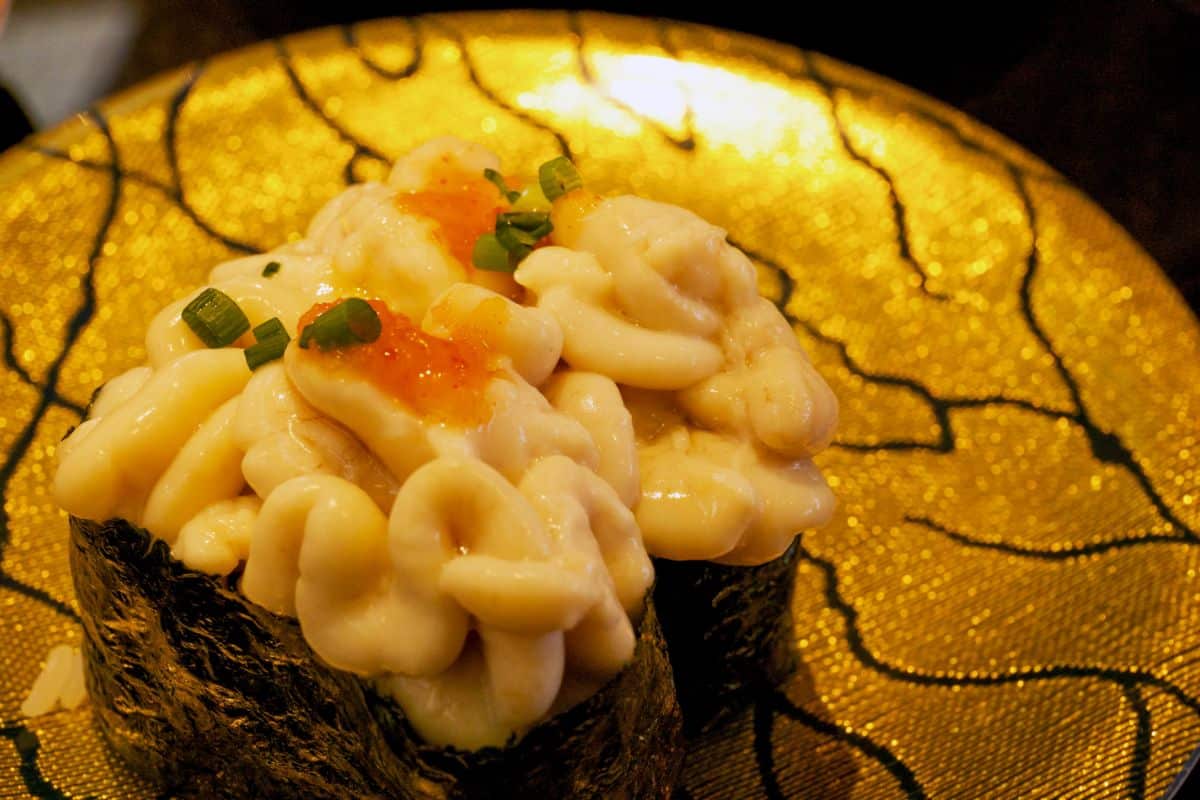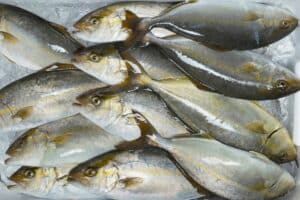When it comes to unique and exotic cuisine, Japan is a country that never fails to surprise. From the succulent slices of sashimi to the savory bowls of ramen, the Land of the Rising Sun boasts a culinary scene that’s both diverse and fascinating.

However, even among the most adventurous food enthusiasts, there are certain dishes that stand out as particularly peculiar.
One such delicacy is Shirako, a traditional Japanese dish that’s earned a reputation as the country’s weirdest and most controversial culinary creation.
Shirako, which translates to “white children” in English, is made from the milt, or seminal fluid, of male fish, typically cod or anglerfish. Despite its unusual origin, Shirako has been a part of Japanese cuisine for centuries, prized for its creamy texture and delicate flavor.
However, it’s also been the subject of much debate and controversy, with some critics denouncing it as a revolting and unethical dish. In this article, we’ll take a deep dive into the world of Shirako, exploring its history, preparation, and cultural significance.
We’ll examine the various ways in which Shirako is served and consumed in Japan, as well as the cultural attitudes and taboos that surround it.
Whether you’re a seasoned foodie looking to expand your culinary horizons or simply curious about the weirdest foods in the world, Shirako is a dish that’s not to be missed.
So, join us as we explore the fascinating and often misunderstood world of Japan’s weirdest delicacy.
What Is Shirako?
Shirako is a traditional Japanese delicacy made from the milt, or seminal fluid, of male fish. The dish is typically prepared using the milt of cod or anglerfish, although other types of fish can be used as well.
Shirako is prized for its rich, creamy texture and delicate flavor, which is said to be reminiscent of custard or whipped cream. To prepare Shirako, the fish are caught and the milt is extracted and carefully cleaned.
The milt is then lightly poached or boiled and served fresh, either on its own or as a component of a larger dish. Despite its unusual origin, Shirako is considered a delicacy in Japan and is served in a variety of contexts, from high-end restaurants to casual izakayas.
However, due to its controversial nature, Shirako is not widely consumed outside of Japan and is often regarded with skepticism and even disgust by those who are unfamiliar with the dish.
History Of Shirako
The consumption of Shirako has a long history in Japan, dating back to the Edo period (1603-1868). During this time, the dish was primarily consumed by fishermen and their families, who would eat it as a source of protein and nutrition.
Over time, Shirako became more widely available and was eventually incorporated into traditional Japanese cuisine.
Despite its humble origins, Shirako has always been a highly prized delicacy in Japan, with some even considering it a symbol of good luck and prosperity.
In fact, during the Edo period, Shirako was often given as a gift to those who were considered particularly lucky or successful.
Today, Shirako remains a popular and widely consumed delicacy in Japan, particularly during the winter months when the milt of cod and other fish is said to be at its peak.
How Is Shirako Prepared?
Shirako is typically prepared using the milt, or seminal fluid, of male fish such as cod or anglerfish. The milt is carefully extracted from the fish, cleaned, and then lightly poached or boiled to preserve its delicate flavor and texture.
Once prepared, Shirako is often served raw or lightly cooked, as overcooking can cause the milt to become tough and rubbery. The dish is typically served fresh and can be consumed on its own or used as a component in a larger dish.
One popular preparation of Shirako is as a topping for sushi or sashimi. In this context, the Shirako is served raw and is typically accompanied by soy sauce, wasabi, and other traditional sushi condiments.
Shirako is also often used in hot pot dishes such as shabu-shabu or sukiyaki. In these preparations, the Shirako is added to a broth along with other ingredients such as vegetables, tofu, and meat, and is simmered until cooked through.
Another popular way to enjoy Shirako is as a tempura or fritter. In this preparation, the Shirako is coated in a batter and fried until golden brown, resulting in a crispy exterior and a creamy, delicate interior.
Why Is Shirako Controversial?
Shirako is controversial for a few different reasons. First and foremost, the dish is made from the milt, or seminal fluid, of male fish, which some people find unappealing or even repulsive.
The idea of consuming a reproductive organ of a fish can be off-putting to those who are not familiar with the dish or its cultural context. Additionally, there are ethical concerns surrounding the extraction of milt from live fish.
In some cases, fish are harvested specifically for their milt, which is then extracted while the fish are still alive. Critics argue that this practice is inhumane and causes unnecessary stress and pain to the animals.
Finally, there are cultural and societal taboos surrounding the consumption of Shirako. In many parts of the world, the consumption of reproductive organs or bodily fluids is seen as taboo or even taboo.
This can create a sense of revulsion or disgust among those who are not accustomed to eating these types of foods. Despite these controversies, Shirako remains a popular and widely consumed delicacy in Japan.
While not everyone may enjoy the taste or concept of Shirako, it is an important part of Japanese culinary tradition and culture.
What Does Shirako Taste Like?
Shirako has a unique and delicate flavor that is difficult to describe, but is highly regarded by those who enjoy the dish. The milt of male fish is rich and creamy, with a texture that is often compared to custard or whipped cream.
In terms of flavor, Shirako is often described as being slightly sweet and nutty, with a subtle umami taste. Some people also detect a slightly briny or oceanic flavor, which is not surprising given that the milt is extracted from fish.
Overall, Shirako has a rich and complex flavor that is best enjoyed in small quantities, as its richness can be quite overwhelming if consumed in large amounts.
The dish is often served raw or lightly cooked, as overcooking can cause the milt to become tough and rubbery and can diminish its delicate flavor and texture.
Health Benefits Of Shirako

Shirako is a good source of high-quality protein, omega-3 fatty acids, and various vitamins and minerals. Here are some of the potential health benefits of consuming Shirako:
- Protein: Shirako is a rich source of high-quality protein, which is essential for building and repairing tissues in the body. Protein also helps to regulate hormones and enzymes, and can help to keep you feeling full and satisfied after a meal.
- Omega-3 Fatty Acids: Shirako is rich in omega-3 fatty acids, which have been shown to have a range of health benefits.
Omega-3s can help to reduce inflammation in the body, which can be beneficial for conditions such as arthritis and heart disease. They can also support brain function and may help to reduce the risk of depression and other mental health disorders.
- Vitamins and Minerals: Shirako is a good source of various vitamins and minerals, including vitamin D, vitamin B12, and zinc.
Vitamin D is essential for strong bones and teeth, while vitamin B12 is important for red blood cell formation and nervous system function. Zinc is important for immune function and wound healing.
While Shirako can be a nutritious addition to a balanced diet, it is important to consume it in moderation, as it is also high in cholesterol and calories.
Where Can You Buy Shirako?
Shirako is a popular delicacy in Japan and can be found at many seafood markets, fishmongers, and specialty restaurants throughout the country. However, it can be more difficult to find outside of Japan, particularly in areas with less access to fresh seafood.
If you are interested in trying Shirako and live in a city with a large Japanese population, you may be able to find it at a Japanese grocery store or specialty seafood market.
Alternatively, some high-end sushi restaurants may offer Shirako as a specialty item on their menu. If you are unable to find Shirako locally, you may be able to purchase it online from a specialty food retailer or seafood distributor.
However, it is important to exercise caution when purchasing seafood online, as it can be difficult to verify the quality and freshness of the product.
When purchasing Shirako, it is important to choose a reputable source and ensure that the product is fresh and has been handled and stored properly.
If in doubt, it is best to consult with a knowledgeable seafood expert or chef to ensure that you are getting a high-quality product.
How Much Does Shirako Cost?
The cost of Shirako can vary widely depending on several factors, such as the location, seasonality, availability, and quality of the product.
In Japan, where Shirako is a popular delicacy, prices can range from ¥1,500 to ¥5,000 (approximately $14 to $46 USD) per 100 grams, depending on the market and season.
Outside of Japan, prices may be higher due to the cost of importing and handling the product, as well as its relative rarity in some areas. In specialty seafood markets or online stores, the cost of Shirako can range from $30 to $60 USD per pound.
It is worth noting that the cost of Shirako can be affected by factors such as the species of fish it comes from, the location and method of harvest, and the processing and packaging methods used.
Additionally, some higher-end restaurants may offer Shirako as a specialty item on their menu at a premium price. Ultimately, the cost of Shirako will depend on a variety of factors and may vary widely depending on where and how it is purchased.
If you are interested in trying Shirako, it is worth shopping around to find a reputable source and comparing prices to ensure that you are getting a fair deal.
How To Store Shirako?
Shirako is a delicate and perishable product that should be handled and stored with care to ensure its quality and safety. Here are some tips for storing Shirako:
- Refrigeration: Fresh Shirako should be stored in the refrigerator as soon as possible after purchase. Ideally, it should be kept at a temperature between 0-5°C (32-41°F) to prevent bacterial growth and spoilage.
Use a tightly wrapped plastic bag or an airtight container to store Shirako to stop it from absorbing odors or drying out.
- Freezing: Shirako can also be frozen for longer-term storage. To freeze Shirako, use a tightly wrapped plastic bag or an airtight container and place it in the freezer.
When thawing, it is important to do so slowly in the refrigerator to prevent the texture from becoming mushy or grainy.
- Consumption: Shirako is best consumed as soon as possible after purchase to ensure its quality and freshness. It should not be stored for more than a day or two in the refrigerator, even when stored properly.
It is important to note that Shirako is a highly perishable product and should be handled and stored with care to prevent spoilage and foodborne illness. If you are unsure about the quality or safety of your Shirako, it is best to err on the side of caution and discard it.
Final Thoughts
Shirako is a unique and controversial delicacy that is highly prized in Japan and increasingly popular around the world.
While it may not be to everyone’s taste, those who enjoy it appreciate its delicate flavor and creamy texture, which is often compared to custard or whipped cream.
While Shirako offers some potential health benefits, such as being an excellent source of omega-3 fatty acids, protein, and many different vitamins and minerals, it is also quite high in calories and cholesterol.
As with all foods, it is important to consume Shirako in moderation as part of a balanced diet. Additionally, there are ethical concerns surrounding the production and consumption of Shirako, particularly when it is made using the milt of live fish.
It is important to consider these issues when making decisions about whether to consume Shirako or other types of seafood.
If you are interested in trying Shirako, it can be found at many seafood markets and specialty restaurants in Japan and in some Japanese grocery stores and high-end sushi restaurants around the world.
When purchasing Shirako, it is important to choose a reputable source and handle and store it properly to ensure its quality and safety.
Overall, Shirako is a fascinating and complex food that offers a glimpse into the rich culinary traditions and cultural heritage of Japan. While it may not be for everyone, it is certainly worth trying for those who are curious about exploring new flavors and experiences.






